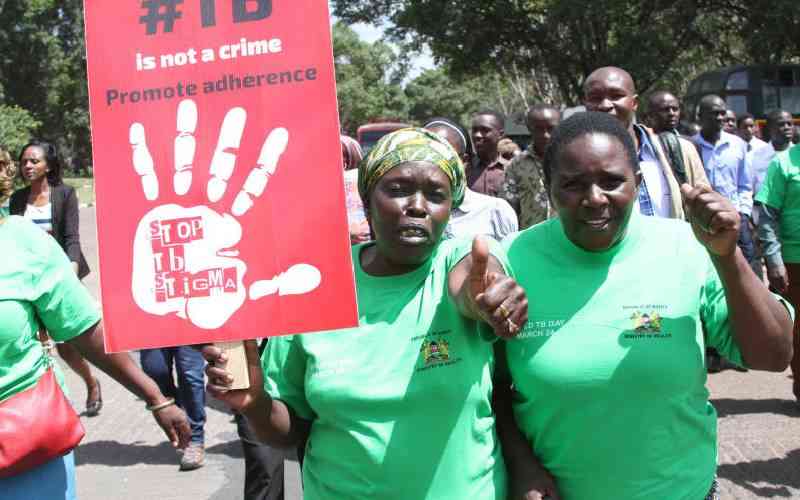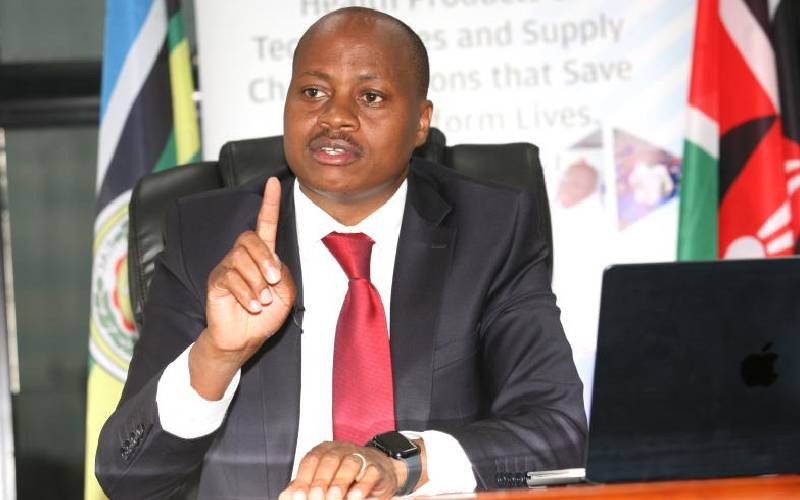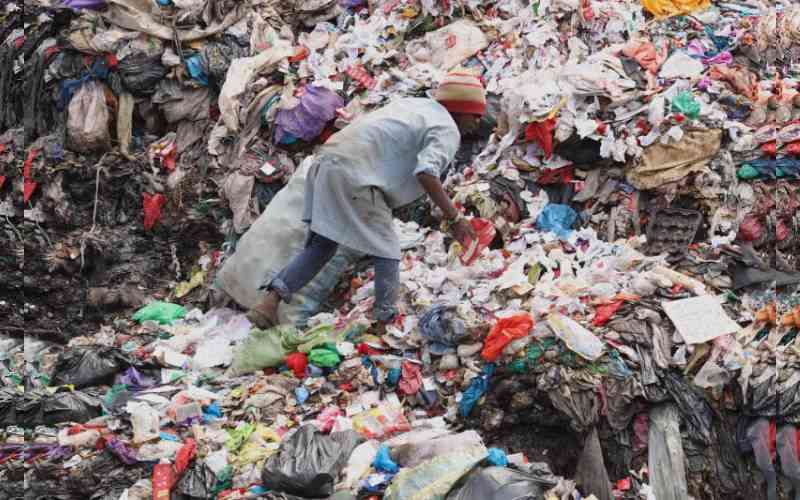By Joyce Gathu
Young Peter throws his ball along the narrow dark alley that separates one row of houses from the other, every now and then he runs back to the house to take a gulp of cold water. "He is an active child and he takes a lot of water. If only food was sufficient then I wouldn’t have to worry too much," explains Kacheri Muthiora, his grandmother.
At a tender age of eight, Peter is one of the many children who are living with HIV. And like many 
Paul Ndegwa, an HIV activist speaking on the need to address paediatric HIV [Photo: [Joyce Gathu]
orphaned by the disease, he lives with his grandmother who can barely meet his needs and those of his other siblings."As long as he takes medication as prescribed by the doctor, he rarely gets sick. But he is required to eat well and sometimes am unable to give him a decent meal," his grandmother explains.
Government statistics estimate that of the 1.4 million people living with HIV in Kenya, 180,000 of them are children with only 40,000 of them on Anti-Retroviral Drugs (ARVs). This means that only 22 per cent of children in need of the life sustaining drugs have access to them.
"These children are wholly dependent on other people to stay on medication and to stay alive. They don’t understand the implication of living with HIV, they require those who understand it to keep them on medication" explains Prof Joseph Karanja, a member of the Kenya Obstetrical Gynaecological Society.
These drugs are also known to further protect children, born of HIV positive mothers, before and after birth by helping them to resist HIV infection.
For those born with HIV and are eligible to be put on ARVs "The dosage is dependent on weight of the baby and whether the child had exposure to ARVs during infancy through prevention of mother to child transmission of HIV (PMTCT). Drugs available are similar to those of adults," explains Dr Lucy Matu of Elizabeth Glaser Pediatric AIDS Foundation (EGPAF) in Nairobi.
Many challenges abound in treating HIV positive children.
"Such as changing dosage as the child grows - one needs a special dosing wheel or complex calculations to guide this adjustment. Some of the drugs don’t taste pleasant for children- so keeping the child on treatment becomes difficult. For children who are malnourished, the nutrition status may discourage the health care worker from providing drugs to the child," Dr Matu explains. This is common among children from poor households who unfortunately carry the burden of pediatric HIV.
Child nutrition is a challenge in some parts of the country with the Ministry of Public Health estimating that about 35 per cent of children are stunted. Some areas such as Eastern Kenya record a high of 42 per cent.
Dr Matu further explains that for children who are orphaned, change in guardians may also mean discontinuity in taking drugs while for those in boarding schools, if the teachers don’t give support, this may be a challenge in continuity.
But this is not all, due to the fact that most of them are unaware of their status and tend to take their medication less seriously they often succumb to Aids or become ill more often than they should.
Often, parents and guardians of HIV positive children withhold information in a bid to protect them and even themselves from stigma in a society that still largely discriminates and criminalises those living with HIV.
The World Health Organisation has stated that "informing older children of their diagnosis of HIV improves adherence," to taking anti-retroviral medication.
"Most children are not told of their status. This makes it difficult for them to understand that their life is dependent on these drugs," explains Janice Wanja, a nurse in Nairobi.
The Kenya’s National Guidelines for HIV Testing and Counseling states that only caregivers can disclose the HIV status of a child. The health worker can only do so with permission from the child’s guardian or parent.
"For children who are malnourished, the nutrition status may discourage the health care worker from providing drugs to the child," explains Dr Matu from EGPAF. Malnutrition is common in Kenya among children from poor households who unfortunately carry the burden of pediatric HIV.
It is also clear that services for children have not reached all the necessary sites including dispensaries where most children naturally seek care. So getting access in a far away health facility may be a challenge.
According to the National AIDS and STD Control Program (Nascop), approximately 60 per cent of all health facilities currently offer PMTCT services. However; most of them are in the urban areas.
Although the Government and its partners are putting in place measures to alleviate the plight of HIV positive children such as educating health workers, the road to success is riddled with obstacles more so with the recent suspension global fund round 11.
 The Standard Group Plc is a multi-media organization with investments in media platforms spanning newspaper print
operations, television, radio broadcasting, digital and online services. The Standard Group is recognized as a
leading multi-media house in Kenya with a key influence in matters of national and international interest.
The Standard Group Plc is a multi-media organization with investments in media platforms spanning newspaper print
operations, television, radio broadcasting, digital and online services. The Standard Group is recognized as a
leading multi-media house in Kenya with a key influence in matters of national and international interest.











